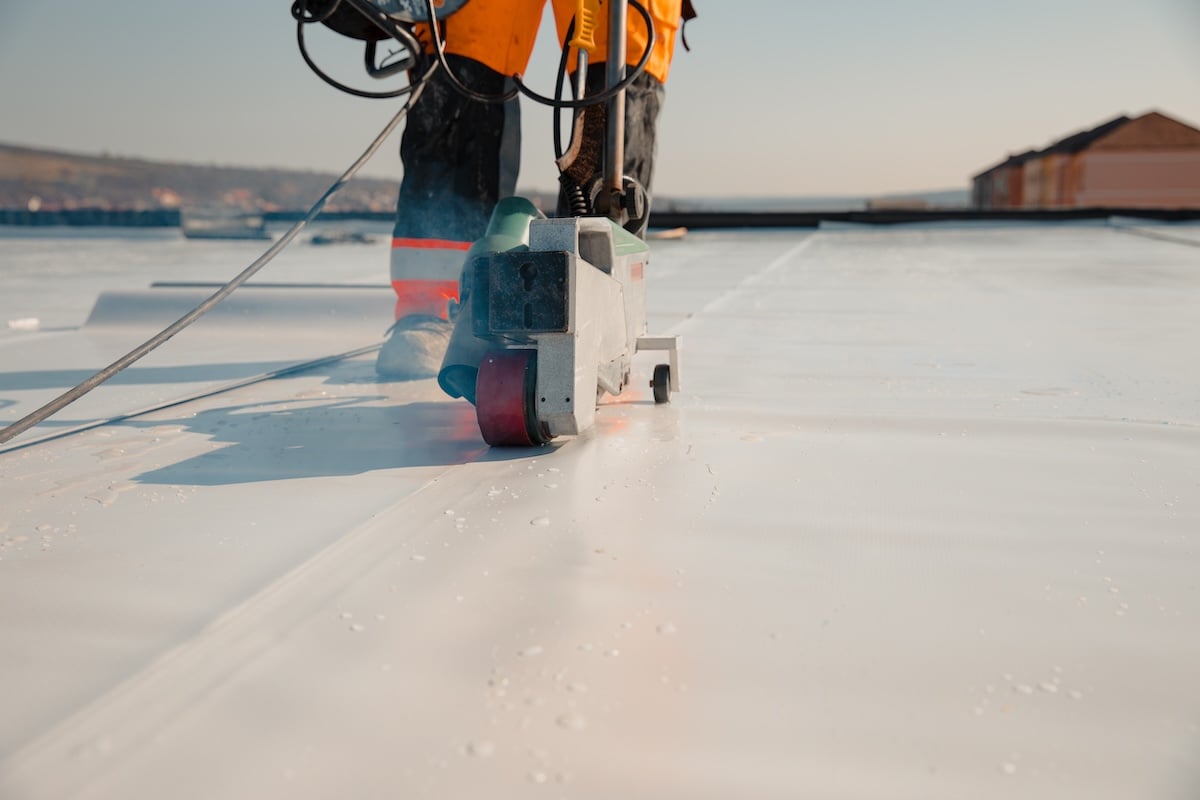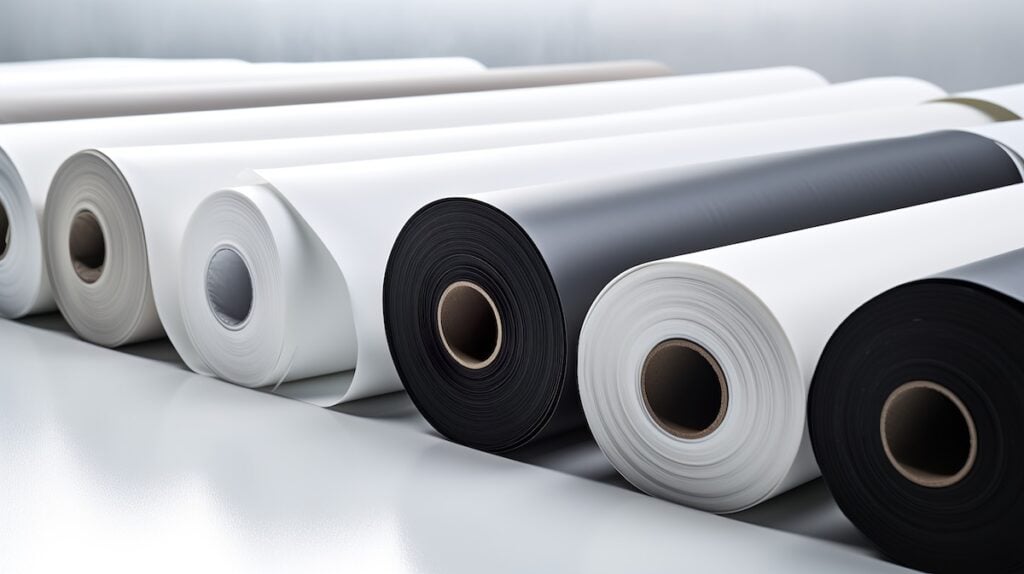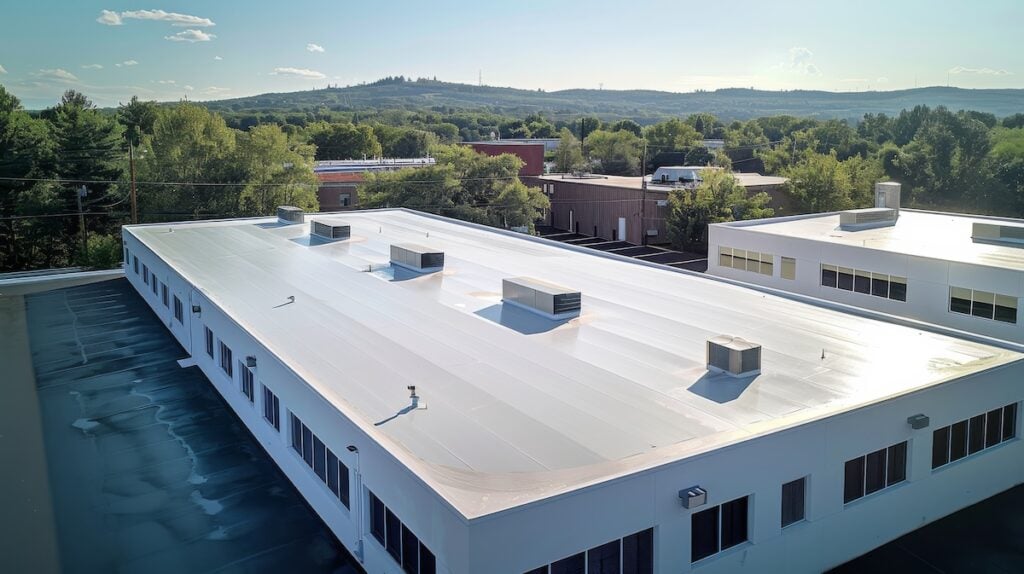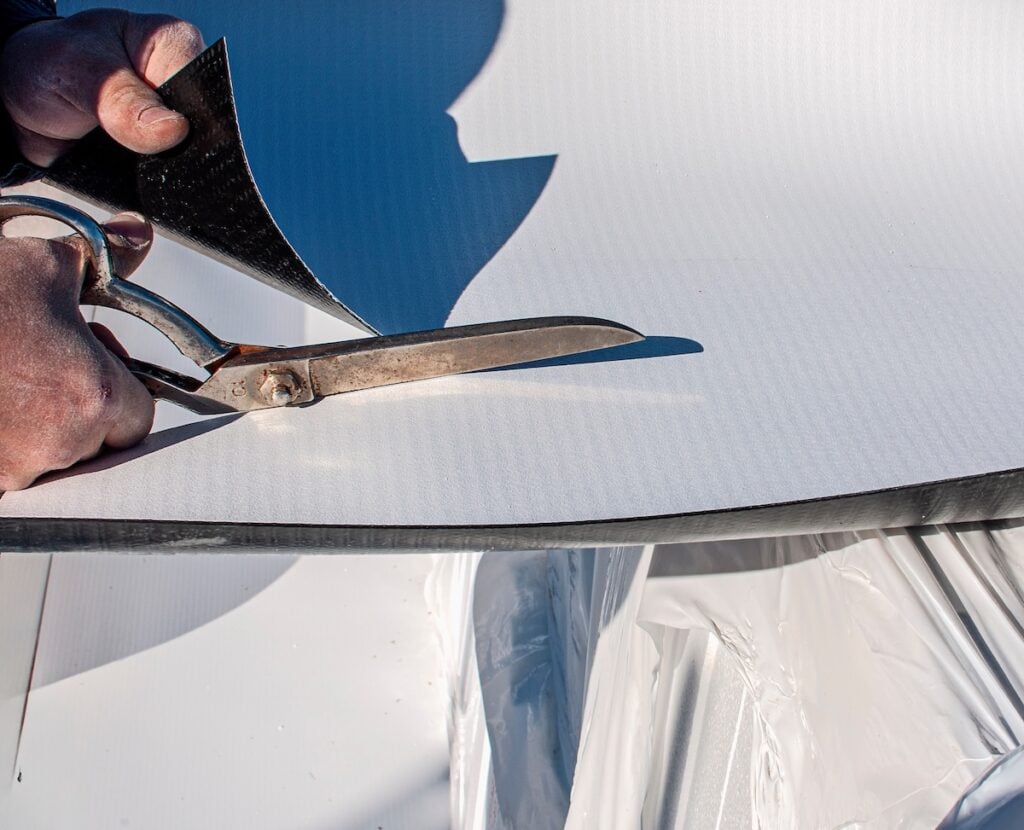
TPO Roofing Material: What Are Pros & Cons?
7/09/25
5 Min Read
TPO roofing material has become one of the most popular flat roofing choices for commercial properties across Ohio. Known for its affordability, energy efficiency, and durability, this single-ply membrane is gaining attention as an alternative to other flat roof systems. But like every roofing material, TPO has its strengths and weaknesses. Before you invest in a new commercial roof, it’s important to understand the full picture.
- Affordability: TPO tends to be one of the more cost-effective flat roofing systems.
- Energy savings: The bright white surface reflects sunlight, which helps lower utility costs.
- Versatility: TPO can be used on a wide range of commercial low-slope and flat roof applications.
Let’s break down the pros and cons of TPO roofing material so you can make the most informed decision for your building.
🤔 What Is TPO Roofing?
TPO, or Thermoplastic Polyolefin, is a single-ply roofing membrane that combines polypropylene and ethylene-propylene rubber. It was first introduced in the 1990s and quickly became popular because it offered many of the benefits of PVC roofing without the higher price tag.
TPO roofing is typically installed in large sheets that are heat-welded together, creating a watertight seal. This seamless design reduces the risk of leaks compared to older commercial roofing methods like built-up roofs.

✅ The Advantages of TPO Roofing Material
Commercial property owners choose TPO for its wide range of benefits. From cost to performance, this roofing system checks many boxes for businesses looking for reliable protection.
- Cost-Effective Roofing: TPO roofing is more budget-friendly than other flat roof systems like PVC or EPDM. Because of its balance of affordability and performance, it has become one of the most widely installed commercial roofing options across the country.
- Energy Efficiency Benefits: One of TPO’s biggest selling points is its reflective surface. The white membrane reflects UV rays instead of absorbing them, which keeps buildings cooler in the summer and reduces strain on HVAC systems. Lower utility bills are especially valuable for large commercial spaces where cooling costs can be significant.
- Durability and Strength: TPO roofing is designed to handle UV rays, chemical exposure, and punctures. When properly installed, it offers excellent resistance to tears, mold growth, and standing water. For business owners, this durability translates into fewer disruptions and long-term protection for tenants and inventory.
- Environmentally Friendly Choice: Unlike some roofing materials that contain harmful chemicals, TPO is recyclable. For companies with sustainability initiatives, this makes it an appealing choice to support greener building practices.
❌ The Disadvantages of TPO Roofing Material
While TPO offers many benefits, it also has limitations. Being aware of potential drawbacks helps commercial property owners make better investment decisions.
- Lifespan Concerns: Although TPO roofs are durable, their lifespan is generally shorter than premium commercial roofing systems like metal or PVC. A typical TPO roof lasts 15–25 years, which may or may not align with your long-term building plans.
- Inconsistent Quality Across Manufacturers: Because TPO has only been on the market for a few decades, some manufacturers produce higher-quality products than others. This inconsistency means your roof’s performance depends heavily on selecting the right product and a skilled contractor.
- Vulnerability in Extreme Heat: While TPO performs well in Ohio’s climate, prolonged exposure to very high temperatures can sometimes lead to surface cracking or shrinkage. This is a bigger concern in southern states, but it is still worth monitoring.
- Installation Sensitivity: TPO requires precise installation to perform properly. Improper heat welding during installation can create weak points that lead to leaks. For commercial buildings where roof failures can disrupt operations, choosing an experienced contractor is critical.

📋 5 Pros and Cons of TPO Roofing Material
Here’s a quick breakdown of the main advantages and disadvantages for commercial property owners:
- Pro: Cost savings: TPO is one of the most affordable flat roofing options without sacrificing performance.
- Pro: Energy efficiency: The reflective surface helps reduce cooling costs in large buildings.
- Pro: Strong and flexible: TPO resists punctures, tears, and many chemicals.
- Con: Shorter lifespan: Typically 15–25 years, which is less than options like PVC or metal.
- Con: Installation dependent: Poor workmanship can lead to leaks or premature failure.
🏢 Is TPO Roofing Right for Your Building?
Deciding whether TPO is right for your commercial property depends on your budget, building size, and long-term goals. If you need an affordable, energy-efficient solution for a flat or low-slope roof, TPO can be a smart investment. However, if your goal is maximum longevity and you’re willing to invest more upfront, you may want to consider alternatives like PVC or standing seam metal roofing.

🤝 Choosing a Trusted Commercial Roofing Contractor
The biggest factor in how well your TPO roofing material performs is the quality of installation. Even the best product can fail if the seams aren’t heat-welded properly. For business owners, this means selecting a contractor who understands the unique demands of commercial roofing and can deliver precision installation that minimizes downtime and ensures long-term performance.
⭐️ Is TPO Roofing Worth It?
TPO roofing material offers an affordable, energy-efficient, and durable option for commercial properties with flat or low-slope roofs. While it does have drawbacks such as a shorter lifespan and installation sensitivity, many businesses find that the cost savings and performance outweigh the disadvantages.
At Buckeye State Roofing, we specialize in commercial TPO roof installations built to handle Ohio’s climate. Our experienced team ensures every detail is completed with care so your business can stay protected and operational. If you’re considering TPO or exploring other roofing systems, contact us today for a free estimate and expert guidance on the best solution for your building.
